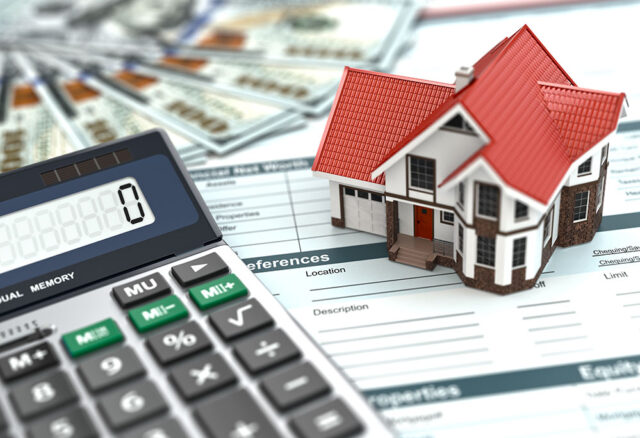IRR Real Estate
As a real estate investor specializing in cash flow properties, People asked many questions from investors who are new to investing or want to expand their knowledge. One of the most common questions relates to how different types of investments have different rates of return and what exactly is IRR.
Internal rate of return (IRR) is a valuable metric used in real estate investing to evaluate the potential profitability of property investment over time. It considers the time value of money and factors in all cash flows associated with the investment, including income from rent, appreciation, and expenses such as maintenance and financing costs. By calculating the IRR, investors can determine the expected rate of return on their investment and compare it to other investment opportunities. In the real estate industry, IRR is commonly used to evaluate potential development projects, commercial properties, and residential rental properties. A high IRR indicates a strong return on investment, while a low IRR may indicate that the investment is not likely to be profitable. By understanding the IRR of a potential real estate investment, investors can make informed decisions and maximize their returns over time.IRR (Rates of return on investments)
Rates of return on investments are expressed in percentages and are used to measure an investment’s profitability over time. Having an annual IRR of 12% means having 12% more than you did twelve months earlier, for example:
The formula for calculating IRR is as follows:
- The net profit is the difference between the amount of cash generated by an investment over its holding period and the amount invested.
- The Time Value of Money (TVM) measures how valuable a future sum of money would be if received now.
- Opportunity cost is a comparison of the IRRs of alternative investments.
The best way to understand IRR is to think of it as the discount rate, or interest rate, equal to zero because the cash flows you receive have a zero net present value (NPV). A weighted IRR allows you to compare alternative investments whose cash flows occur at various times with those whose cash flows occur at periodic intervals. Due to such factors as inflation, unknown future events, and general investment risk, a dollar received today is worth more than a dollar received in the future.
Real estate investors need a specific rate of return from their capital investments to justify the investment. A fund that generates an IRR greater than or equal to your required return is worth looking at closely, assuming everything else is equal.
Factors affecting IRR
If you wish to calculate the potential IRR of an investment in real estate, you must make the following assumptions:
- Periodic cash flow amount
- Periodical cash flow timing
- Date of a property sale
- Property sale price
If you receive cash flows monthly or annually, for example, even minor changes in these assumptions can significantly impact your IRR. In the case of an investment of $100,000 and the first-month distribution of $1,000, you now have $101,000. You have a monthly IRR of 1% and a 1% return on your original investment. The amount you make from your initial investment will total $12,682.50 by the end of 12 months if it grows by 1% each month.
It equates to an annual yield of 12.68% ($112,682.50 / $100,000) – 1 = 0.1268 or 12.68%. However, your annual IRR would only be 12% if you received a single distribution of $12,000 per year from your $100,000 investment.
Potential profitability
A real estate investment’s internal rate of return (IRR) represents its potential profitability. It’s essential to consider the prospective investment in detail when determining a good IRR and understand that a good IRR is not always what it seems. The top-line return on an investment project may be high, but the net return to you as an investor may be lower since the developer or sponsor earns asset management fees before distributions are made. A negative IRR can occur if investment returns are calculated annually instead of monthly or quarterly, as is the industry standard.
The level of risk and the expected income stability will also result in varying IRRs for Core Plus, Core, and Value Add investments:
- Investing in Core Plus will yield a lower but very predictable IRR, similar to the schedule of a stock dividend and bond payment, with almost no upside or downside risk.
- As cash flows gradually increase and gains are realized when a property is sold, core properties will have slightly higher IRRs.
- Even when the cash flow is uneven and the gain on sale is more significant than a Core Plus investment, Value Add projects may offer higher IRRs.
Evaluating non-real estate investments
Although it’s possible to use IRR and net present value for evaluating non-real estate investments, the payback method is more likely to be applicable. For example, if you were going into business, whether a project was profitable could depend on how long it took before the cash flow returned your initial investment. For this reason, I recommend using the payback period when evaluating all investments.
For example, one of the businesses you could buy with cash flow was an office building. The office building cost $1 million, and it took you 18 months until the property was paying for itself in net positive cash flow. This enabled you to compare multiple real estate investments and determine which one would be best for your portfolio based on their respective cash flows and how long it would take to realize a return on investment.
Read More: What Is A Real Estate Developer? All You Need To Know About Real Estate Developer






